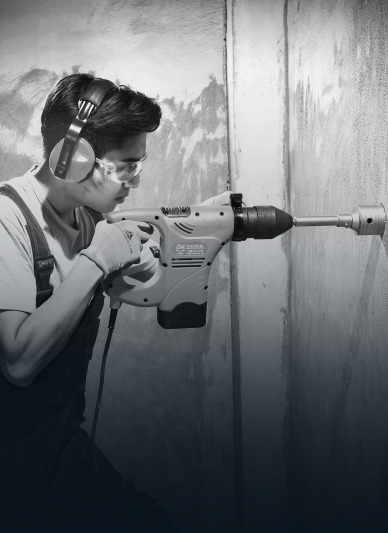With the growing demand for efficient drilling in construction, mining, and industrial manufacturing, the Hammer Drill Bit is undergoing a comprehensive technological upgrade. This upgrade not only focuses on optimizing drilling efficiency and accuracy but also encompasses enhanced multi-material adaptability, improved durability, broad compatibility, and integration with intelligent CNC machining, driving the industry toward a new era of smart, efficient, and sustainable development.
Innovative Drill Head Design
Improving drilling efficiency and precision has become a key measure of hammer drill bit performance. The latest generation of drill bits features optimized drill head geometry, improved spiral groove angles, and chip evacuation structures, significantly increasing chip removal speed and reducing issues caused by clogging and heat accumulation during drilling. These design enhancements shorten drilling time, minimize material deformation and hole deviation, and ensure drilling accuracy to meet high construction standards. Additionally, the drill head geometry is optimized through 3D modeling simulations to refine cutting angles and chip grooves, reducing drilling resistance, lowering frictional heat, and extending tool life.
Enhanced Multi-Material Adaptability
Enhanced adaptability allows hammer drill bits to handle increasingly complex construction environments. Modern projects require drilling not only in concrete and brick but also reinforced concrete, gypsum board, and some metal materials. To meet these challenges, manufacturers use multi-layer alloy materials and composite cutting edges that offer strong wear resistance on hard materials while maintaining sharp cutting on softer materials, preventing excessive wear or tooth breakage. This versatility broadens the drill bit’s application range, simplifies onsite tool setups, and reduces replacement frequency and labor costs.
Upgraded High-Performance Materials
Durability and lifespan improvements remain vital in industry advancements. Currently, hammer drill bits widely utilize high-performance tungsten carbide alloys combined with advanced heat treatment and surface coating technologies such as titanium nitride coatings. These processes greatly enhance hardness and wear resistance, effectively preventing tooth chipping caused by intense impacts. Moreover, dynamic balancing tests and high-speed stability verifications ensure structural stability during high-speed impact operations, reducing vibration and fracture risks while safeguarding worker safety and construction quality.
Diversified Design for Compatibility
Construction sites feature a variety of tool brands and models, posing challenges for drill bit shank specifications and locking mechanisms. Modern hammer drill bits are designed with diversity, supporting common specifications such as SDS-Plus, SDS-Max, and hex shanks to achieve broad compatibility. Furthermore, the introduction of universal quick-change systems improves head replacement efficiency and operational convenience, meeting the needs of various construction scenarios and effectively avoiding work delays caused by tool mismatches, thus enhancing operational flexibility and efficiency.
Multi-Scenario Application and Compatibility Optimization
As construction environments become more complex, hammer drill bits must tackle a variety of materials including concrete, brick, gypsum board, and metal. Designers emphasize creating multifunctional bits tailored to different material properties to achieve wide applicability. Meanwhile, multiple shank types ensure perfect compatibility with various electric drills, preventing safety risks and project delays caused by mismatched tools.
Intelligent Manufacturing and CNC Integration
With the rapid advancement of Industry 4.0 and intelligent manufacturing, hammer drill bits are increasingly integrated with CNC drilling machines. Through precise control by CNC equipment combined with high-performance drill bits, automated high-speed drilling is realized, significantly improving production efficiency and hole positioning accuracy. Looking ahead, the incorporation of smart sensor technology will enable real-time monitoring of drill bit conditions, timely wear prediction, and early fault detection, promoting smart, preventive maintenance and further advancing the digitization of construction processes.
As a critical tool for high-strength material processing, the Hammer Drill Bit is evolving from breakthroughs in efficiency and precision toward multifunctional adaptability, extended durability, and intelligent manufacturing. Its excellent multi-scenario compatibility and smart applications not only significantly enhance construction efficiency but also drive the entire industry toward greener, digitalized, and higher-quality development, becoming an indispensable tool for future construction fields.







